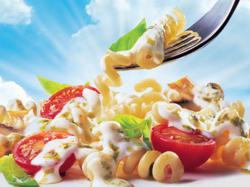Kraft Foods Details Packaging Reduction Initiatives
January 27, 2010 | 3 min to read

NORTHFIELD, Ill., Jan. 27 — A few years ago, Kraft Foods decided to lose a lot of weight. And today, it’s starting the new year 150 million pounds (116 million kilograms) leaner having eliminated enough material from its supply chain since 2005 to exceed the company’s packaging reduction goal two years ahead of schedule!
“Our global team of employees is doing a phenomenal job creating opportunities to reduce packaging material while assuring convenience and safety,” said Jean Spence, Executive Vice President, Research, Development & Quality. “We’ve invented a tool to help us design more efficiently. And we’re finding smarter source materials, reducing our footprint and thinking differently about packaging end of life. We’re sharing ideas, challenging and motivating one another, so this is truly a collaborative team effort.”
Following are examples from Kraft Foods operations around the globe:
Shedding Weight with More Efficient Design
The greatest opportunity to influence the environmental impact based on a package’s size is early in the design phase. That’s why Kraft Foods developed the Packaging Eco-Calculator — a tool that helps packaging developers create efficient and optimized packaging.
In the U.S., the Oscar Mayer Deli Creations packaging was redesigned with 30 percent less paperboard which is expected to keep 1.2 million pounds (more than 500,000 kilograms) of packaging out of landfills per year. Consumers like the new package because it’s smaller, convenient and takes up less shelf space, while the amount of product remains the same.
In Europe, the removal of packaging layers for Milka chocolate bars resulted in 60 percent less weight and an elimination of 5.7 million pounds (2,600 metric tons) of packaging material per year. And Kraft Foods is spreading the design to markets in Latin America.
In Australia, Kraft Salad Dressing bottles were redesigned to eliminate more than 100,000 pounds (45,000 kilograms) of plastic per year. The patented design differentiates the Kraft brand from competitors and allows more bottles to ship per truckload, effectively taking trucks off the road.
Choosing Smarter Packaging Ingredients
Design matters, but the type of material used also plays a role. Kraft Foods is finding ways to increase the recycled content and recyclability of the packaging for its products.
In the United Kingdom, Kraft Foods recently began selling Kenco coffee in refill bags to complement glass jars. The refill bags use 97 percent less packaging material by weight than a new jar, and less energy in the packaging conversion process.
In North America, Kraft Foods recently changed its Maxwell House, Yuban and Nabob coffee brands from steel cans to composite paperboard that weighs 30 percent less, uses 50 percent recycled content and is expected to eliminate 8.5 million pounds (3.9 million kilograms) of packaging.
Changing Behavior with Innovative Partnerships
Kraft Foods recycles nearly 90 percent of its global manufacturing waste. So it makes sense to help consumers boost their own recycling rates and deal with packaging that isn’t recyclable, because less packaging in landfills means less environmental impact.
In the United States, consumer recycling rates are only 33 percent, but in other parts of the world those numbers are closer to 70 percent. In 2008, to help increase recycling rates in the U.S., Kraft Foods began partnering with RecycleBank, a company that rewards consumers for recycling. The more recycling a consumer does, the more reward points they have to redeem and the less waste that goes to landfill. Kraft Foods is proud to be part of RecycleBank’s success that has helped people recycle more than 400,000 tons of material, saving the equivalent of 4.3 million trees and 280,000 gallons of oil.
In 2008, Kraft Foods started partnering with TerraCycle, an innovative company that “upcycles” material that otherwise would’ve gone to a landfill. TerraCycle reuses packaging to make new, useful products. Today, Kraft Foods is the largest sponsor of TerraCycle “brigades” collection points with more than 30,000 Kraft Foods-sponsored locations, and nearly seven million people signed up to collect waste across the United States at these locations. The program has been so successful it has expanded internationally to the United Kingdom and Canada, and there’s more in the works!
Source: Kraft Foods
